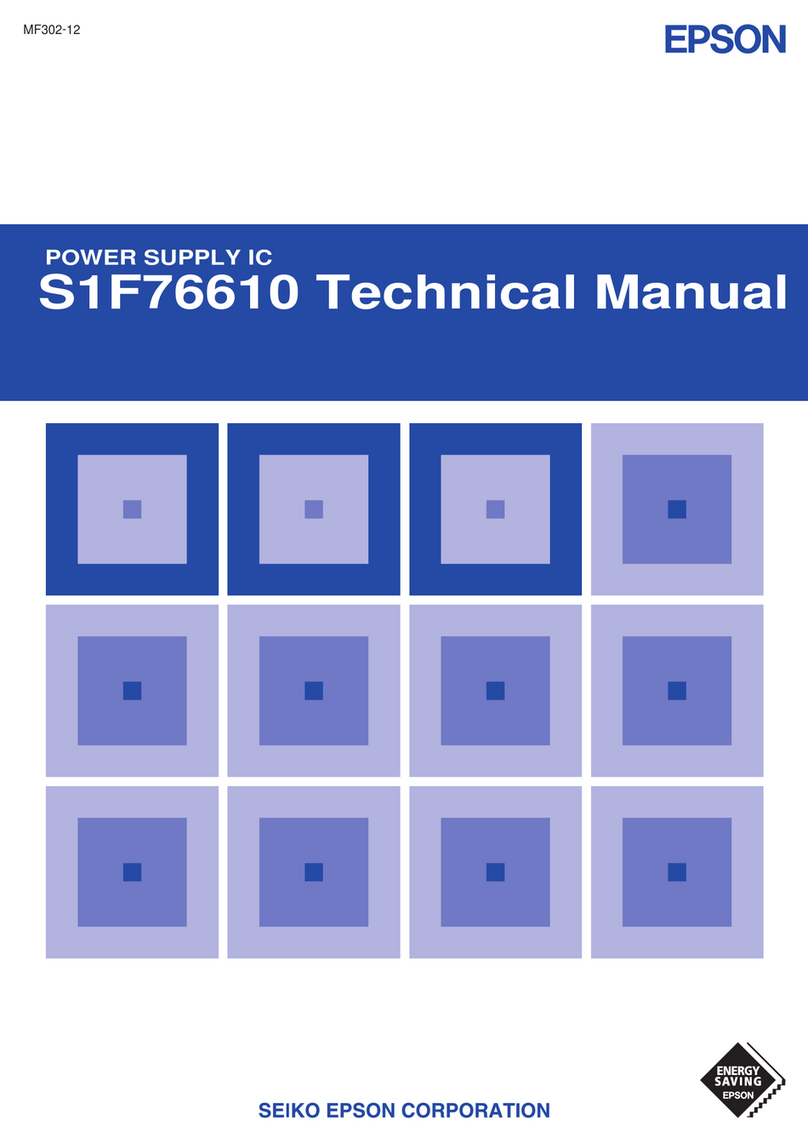
S1F76540M0C Series Technical Manual EPSON i
(Rev.1.1)
Table of Contents
1. DESCRIPTION.............................................................................................................1
1.1 Description.................................................................................................................................1
1.2 Features .....................................................................................................................................1
2. BLOCK DIAGRAM ......................................................................................................2
3. PIN ASSIGNMENT ......................................................................................................2
4. PIN DESCRIPTION......................................................................................................3
5. FUNCTIONAL DESCRIPTION.....................................................................................4
5.1 Clock Generator ........................................................................................................................4
5.2 Voltage Converter......................................................................................................................5
5.3 Reference Voltage Circuit .........................................................................................................6
5.4 Voltage Stabilizer .......................................................................................................................7
5.5 Power-off Control Circuit..........................................................................................................9
5.6 Soft Start Circuit ......................................................................................................................10
6. ABSOLUTE MAXIMUM RATINGS ............................................................................ 11
7. ELECTRICAL CHARACTERISTICS MEASUREMENT STANDARD........................12
7.1 DC Characteristics ..................................................................................................................12
7.2 AC Characteristics ..................................................................................................................14
8. CHARACTERISTICS GRAPHS.................................................................................15
9. REFERENCE: EXTERNAL CONNECTION EXAMPLES ..........................................19
9.1 Quadruple Boosting + Regulator ...........................................................................................19
9.2 3rd Boosting + Regulator........................................................................................................20
9.3 Double Boosting + Regulator .................................................................................................21
9.4 Quadruple Boosting ................................................................................................................22
9.5 3rd Boosting ............................................................................................................................23
9.6 Double Boosting......................................................................................................................24
9.7 Parallel Connection (Boosting Capacity Increase)...............................................................25
9.8 High-Magnification Boosting Using a Diode.........................................................................26
9.8.1 Quintuple Boosting + Regulator ..........................................................................................26
9.8.2 Sextuple Boosting + Regulator............................................................................................28
9.9 Positive Voltage Converter .....................................................................................................30
9.10 Connection Example when Changing the Regulator Temperature Coefficient................32




























